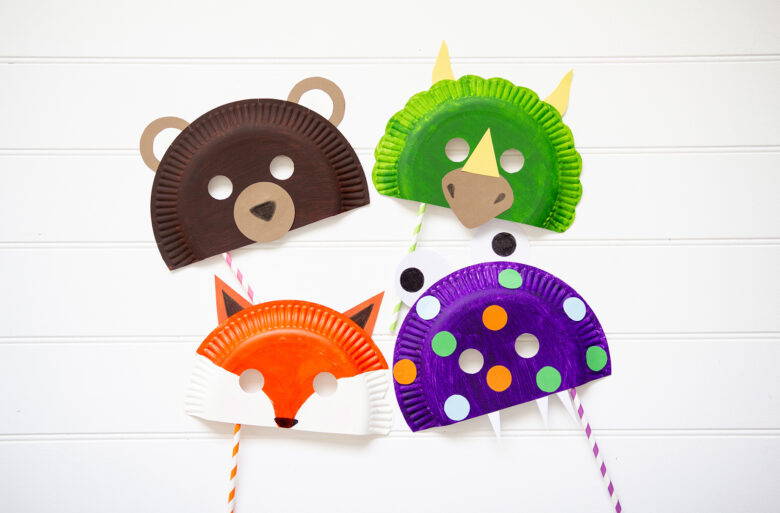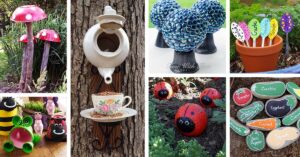Crafting at home not only stimulates children’s creativity but also helps them improve their motor skills and is a great way for families to spend time together. In a world where computers are becoming increasingly common, crafting offers children of all ages a way to use their hands and imaginations. These are some fun projects you can do at home with your kids that are sure to get their attention.
Collage Inspired by Nature:
Start with a walk with your child in the park or neighbourhood. Make sure they can safely pick up leaves, twigs, flowers and other things that interest them. When they get home, give them a piece of sturdy cardboard or construction paper and some glue. You can help them create beautiful collages with things they find in nature. This practice not only helps children love nature, it also allows them to express their artistic side.
Make Playdough at Home:
Players have always loved plasticine because of the many creative uses it can have. Making dough at home is fun and easy. You will need food colouring, vegetable oil, salt, flour and water. Let the children choose colours and help mix the ingredients. Once the playdough is ready, they can spend hours making up stories, characters and the like. This is a great way to play with your senses and improve your small motor skills.
Design Your Own T-Shirt:
All you need is a plain T-shirt and fabric paint or markers. Give your children a work area where they can spread out their T-shirts and draw. They can draw, write their names or make less-clear pictures. This craft allows them to channel their inner fashion designer and gives them a garment they can wear with pride.
Artwork made from Discarded Bottle Caps:
Start saving bottle caps for drinks. If you have enough money, you can use it to make art! For the base, children can use cardboard boxes or wooden planks. They can then glue the lid off and create mosaics, text or even abstract art. Through this programme, children learn how to recycle and reuse objects in creative ways.
Make Your Own Storybook:
Help your children create their own storybooks to get them interested in reading and writing. Give them books or folded paper, markers, crayons and stickers to draw on. They can write their own stories and draw pictures to make them come to life. With this game, children learn to read and write while using their imagination.
Jewellery Made from Paste:
Paint, string, and some pasta (round shapes work best) are all you need for this craft. Children can paint the paste in different colours and shapes and string them together to make a bracelet or necklace. This exercise improves fine motor skills and allows you to wear a work of art.
Petroglyphs:
Petroglyphs can turn ordinary stones into treasures. Gather some smooth stones, paints and brushes for your child. They can transform stones into animals, monsters or decorative souvenirs. Once the paint dries, you can place these painted rocks in your yard, use them as paperweights, or hide them in a public place for others to discover as a random act of kindness.
Masks Made from Paper Plates:
Paper plates are a great way to get creative. Kids can make a mask by making holes for the eyes and adding some straps. Give them crayons, feathers, sequins, or anything else they can stick to. This craft allows children to pretend to be different characters, which also makes playtime extra fun.
Homemade Slime:
Simple things like glue, baking soda and contact lens solution can be used to make slime, which is a big hit with kids. To make it look even better, you can add some food colouring or glitter. Making slime is a fun way to learn chemical reactions and mixing, and the finished product can be used physically for hours.
Cardboard Castle:
With scissors, tape and some decorations, you can turn a large cardboard box into a beautiful house. Children can plan the layout, cut out doors and windows and use paint or markers to create walls. Not only does this craft help kids get creative and build things, but it also makes for great theatre for making up stories.
Conclusion:
Crafting with children is a great way to improve their small motor skills and stimulate their creativity and imagination. With these ten ideas, you and your children can make even more crafts together. Remember, the point is to have fun and show your child who he or she is through art. Now that you have everything you need, you can start crafting!
FAQs:
1. At what age can people make these crafts?
The crafts in this article are suitable for children, from toddlers to teenagers. Homemade playdough and spaghetti jewellery are great for younger children, while custom T-shirt designs and DIY storybooks are more suitable for older children. Adult supervision is recommended when cutting and baking.
2. Can I make these projects educational?
Some of these artefacts can provide a wealth of information. Nature-inspired collages teach about leaves and flowers. Measurements and ingredient reactions can be taught with handmade dough. Creating storybooks promotes literacy and storytelling, while the art of recycled bottle caps inspires discussions about recycling and environmental conservation.
3. Are these crafts expensive to make?
These projects are great because they are cheap. Many people use cardboard, pasta and rocks that they have at home. Even for specific activities, such as designing T-shirts with fabric dye, these materials can be purchased cheaply and reused.
4. How can children’s safety be ensured when making handicrafts?
Perform age-appropriate activities and supervise the use of dangerous objects such as scissors and glue guns to ensure safety. Check beads and pastes for possible choking hazards for young children. Use non-toxic, child-safe paints and materials and ventilate your production environment, especially if using glue or paint.
5. What should I do if my child does not like or dislike the crafts?
It is crucial not to force children to do crafts as their interests vary. However, making a superhero mask for comic book fans or storybooks about their favourite animals can spark interest. Starting with simpler, less precise projects can also be less intimidating. It’s about having fun and exploring creativity, not perfection.



